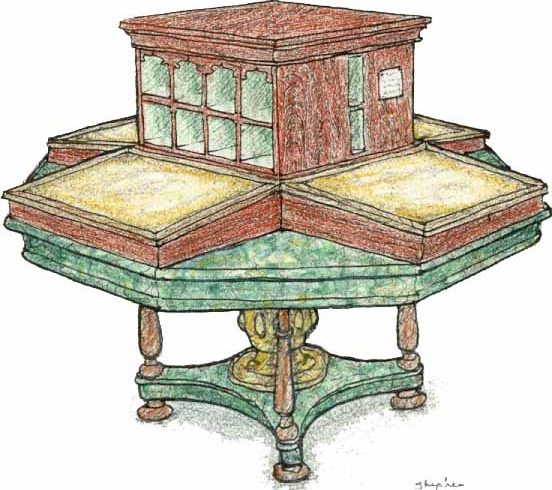
Stephen Shepherd thinks modern furniture is okay, he’s just glad somebody else has to do it. Nineteenth Century furniture and the techniques used to make it are his passion. Not that fancy stuff made for rich people, mind you, just the simple country furniture used by average people.
That passion has made him one of the country’s best know furniture restorers and a master at building what he calls “old timey furniture”.
It all started back in 1972 when Stephen began a traditional four-year apprenticeship at a local cabinet shop in Salt Lake City. His teachers were German immigrant craftsmen who only begrudgingly revealed their trade secrets. Helping a friend restore some antiques and stints at various western museums pushed him further down the path. Other early influences were the books of Charles Hayward and the late Eric Sloan. Then a couple of years working at a living history museum in Indiana culminated with the publication of his first book, “Shepherds’ Compleat Early Nineteenth Century Woodworker” in 1981. Several other books have followed.
Though he’s been involved with a high-end cabinet shop for many years, this staunch traditionalist is inspired in his own work by what he calls “western, Mormon, painted, and grained furniture”.
“There wasn’t any hardwood out here in pioneer days,” he explained, “so all the furniture was made with pine and then painted and grained to look like other woods”.
His commitment to this style and level of his skill are perfectly showcased in his renowned Quebec chair. Seeking out green wood — a rare commodity in bone-dry Utah — he visited a local mill that cuts everything green. The spruce wood he selected started out with a 20% moisture level. As it dried out, the legs tightened around the rungs and created an incredibly strong joint on a beautiful peace of woodwork.
In his other role as a master of furniture restoration, Stephen has perfected a technique for stripping down to the original finish. And it came in real handy during one of his favorite projects. Leaders of the Church of the Latter Day Saints asked him to restore a desk once used by Mormon patriarch and territorial governor Brigham Young. He used his system to strip off nine layers of paint and leave 96% of the original paint (four different colors of marble and rosewood). It’s a prize museum piece today.
Don’t get him wrong; he loves old tools and techniques, but Stephen’s no Luddite. He’s combined his love of teaching with the Internet to become a frequent participant on WoodCentral’s message board.
“I wish the Internet was available when I first took up woodworking,” he noted. “The information and what you can learn from people just blows me away.”
What’s ahead? His original book will soon be back in print, and he’s getting out of the commercial furniture business. Restoration, writing, and teaching will be his focus. Oh, and he’ll probably still find time to make a few pieces of good 19th Century, country furniture with a nice painted grain.





